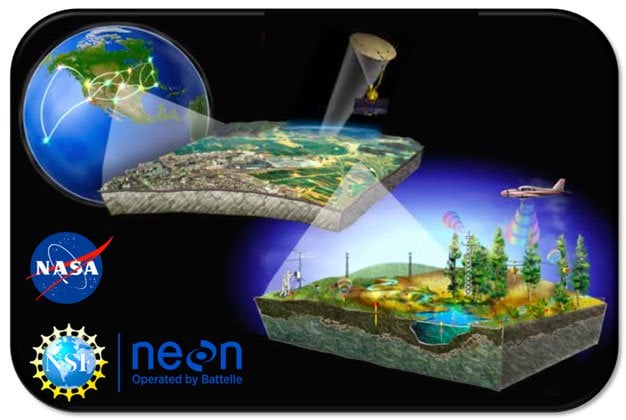Integration of NEON data for Ground Validation of NASA SMAP
Connect with an expert opens in a new pageChallenge
Soil moisture measurements are critical to monitor for drought by showing early warning signs, assist in crop productivity through targeting of humanitarian food assistance, and flood prediction through improved flood warnings. Accurate soil moisture research requires integration of both satellite measurements and long-term in-situ observations. In situ sensors provide accurate measurements of soil moisture but relatively limited spatial coverage, while satellite-based soil moisture measurements provide excellent spatial coverage, but require validation using in-situ sensors and usually penetrate only the top few cm of the soil surface. NASA’s Soil Moisture Active Passive (SMAP) satellite mission uses in situ soil moisture observations for ground validation (GV) however there are still ecosystems that are substantially underrepresented (e.g., forests, which are represented by just 5 sparse network sites).

The Solution
The Outcome
Case Studies
Technology Commercialization and Licensing
With over 90 years of research and development experience, Battelle supports all areas of industry with intellectual property licensing focused on bringing our cross-disciplinary expertise to meet our clients' most difficult challenges.
